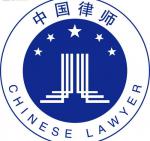Citation:
Olenga v. I.C.B.C.,
2007 BCCA 87
Date: (略)
Docket: CA33221
Between:
Aime Olenga
Appellant
(Plaintiff)
And
Insurance Corporation of British Columbia and Sisett & Company
Respondents
(Defendants)
Before:
The Honourable Mr. Justice Chiasson
(In Chambers)
In Person
The Appellant
V. Critchley
M. Swail
Counsel for the Respondent Insurance Corporation of British Columbia
Counsel for the Respondent
Sisett & Company
Place and Date of Hearing:
Vancouver, British Columbia
29 January 2007
Place and Date of Judgment:
Vancouver, British Columbia
9 February 2007
Reasons for Judgment of the Honourable Mr. Justice Chiasson:
[1] This is an application by the appellant pursuant to s. 25(2) of the Court of Appeal Act, R.S.B.C. 1996, c. 77 for leave to proceed with this appeal which has been placed on the inactive list.
[2] For the reasons that follow I dismiss the application.
Background
[3] The appellant, who represents himself, was involved in a series of automobile accidents. With respect to two of the accidents he was represented by the respondent Sisett & Company. As a result of an August 11, 2003 mediation, his claims arising out of the two accidents were settled and he signed a release, releasing from liability, among others, the respondent Insurance Corporation of British Columbia (ICBC).
[4] On October 12, 2003, the appellant brought an action against the respondents in the Supreme Court of British Columbia on the basis that he was dissatisfied with the settlement.
[5] On May 14, 2004, ICBC served the appellant with a notice of motion seeking to have the claim against it dismissed pursuant to Rules 19(24) and 18A of the Rules of the Court, B.C. Reg. 221/90. The motion first was scheduled for July 27, 2004, but was adjourned because the appellant made submissions concerning his ability mentally to address the case. He obtained a medical opinion related to this on August 10, 2004.
[6] On December 13, 2004, pursuant to an order made on October 21, 2004, the appellant delivered a 166-page amended statement of claim. This resulted in applications by both respondents to strike the appellant’s claims which for the most part succeeded and are now the subject of the within appeal.
[7] In a judgment made July 5, 2005, the Chambers judge concluded that all of the appellant’s claims against the respondents should be struck, except a claim in negligence against Sisett & Company.
[8] The appellant filed a notice of appeal on August 5, 2005. The appeal record was filed on October 6, 2005. Pursuant to Rule 21 of the Court of Appeal Rules, B.C. Reg. 297/2001, the appellant’s factum was due 30 days later. No factum has been filed.
[9] On August 9, 2006, a registrar of this Court wrote to the appellant pursuant to s. 25(1) of the Act advising him that his appeal had been placed on the inactive list and that if no steps were taken the appeal would be dismissed as abandoned. A copy of the relevant statutory provision was included with the registrar’s letter. This material set out that if the appeal were to remain on the inactive list for 180 days, it would stand dismissed as abandoned on the 181st day, which I calculate to be February 10, 2007 based on the date of the letter. It is not necessary for me to consider whether this is the correct starting point or whether the time runs from August 5, 2006, the anniversary of the filing of the notice of appeal. If it were the latter, insofar as I would have discretion to do so, I would extend the time appropriately.
[10] On January 24, 2007 the appellant filed this application. His motion was dated January 17, 2007.
[11] At the hearing, the appellant confirmed that he intends to pursue the appeal against both respondents. They oppose the application.
Discussion
[12] On this application the overriding issue is whether it is in the interests of justice to grant leave to the appellant to proceed with his appeal (C.(S.K.) v. F.(G.Y.), 2003 BCCA 345 (Chambers); Hovianseian v. Hovianseian, 2002 BCCA 664 (Chambers)).
[13] This Court in Deline v. Kidd, 2003 BCCA 170 at para. 11 addressed factors that should be considered. They include: whether there has been inordinate delay; whether the delay is explained satisfactorily; whether there would be prejudice if the appeal were reactivated; the merits of the appeal.
[14] In my view the delay has been inordinate. The appeal was brought 17 months ago. Only the appeal record has been filed. The factum was due just over 14 months ago. The appeal was put on the inactive list five months ago.
[15] The appellant appears to attribute the delay to his medical condition. In support of this he relies on the August 2004 medical report. He deposed, “…he is confronting the adversity of the chronic pain and further mental impairment he is subjected by the same medications. As he is working already under duress and heavy pressure it took him more time to do his Factum”.
[16] The respondent ICBC notes that the appellant has conducted himself well at various stages of the litigation, including filing an amended statement of claim in this action and presenting his position at the Chambers hearing. Counsel for the respondent Sisett stated at the hearing that in August 2006 the appellant was able to deliver pleadings in the continuing litigation against it.
[17] Although the appellant appeared to be quite adversely affected by medication at the beginning of the day on January 29, 2007, he was quite able to present his position on this application later in the day.
[18] I question the extent to which his health problems have interfered with his ability to prepare and deliver a factum for the past 14 months.
[19] In para. 6 of his reasons, the Chambers judge described the allegations of the appellant:
The nature of the claim against the defendants appears to be couched in terms of conspiracy and collusion to cause various forms of injury or harm to the plaintiff. Many of the harms alleged appear to relate to offence provisions in the Criminal Code RSC 1985 C-46 including criminal negligence, assault, aggravated assault, breach of trust as a public officer, forgery, murder, attempted murder, being a member of a criminal organization, wounding, fraud as well as a number of other forms of harmful behaviour.
[20] He concluded in para. 28: “…after considering the submissions of counsel and those of Mr. Olenga and reviewing the affidavits, materials and briefs filed, that the statement of claim must be struck as against the defendants ICBC and Sisett & Company insofar as it pleads conspiracy with ICBC and fraud”.
[21] The Chambers judge considered carefully the authorities applicable to the application before him and concluded on the law and on the evidence that the allegations of fraud and conspiracy should be struck. I quote paras. 29 – 32 of his reasons:
This is a case where it appears Mr. Olenga wishes to set aside the agreement of settlement made August 11, 2003, yet he has not brought action against the tortfeasors with whom the settlement was reached. The basis of his claim against ICBC and Sisett & Company relating to conspiracy, collusion and fraud as set forth in the statement of claim is so wide ranging and all encompassing as to be impossible to understand or respond to in any meaningful way.
Insofar as his claim appears to rest on an allegation that ICBC conspired with or colluded with the defendant Sisett & Company or the Workers’ Compensation Board or the Workers’ Compensation Appeal Tribunal or others to deprive him of a just remedy arising out of the accidents he has been involved in, Mr. Olenga’s pleadings do not achieve the level of clarity, specificity or asserted factual content necessary to withstand an application to strike under Rule 19(24). His pleadings are essentially speculations and ungrounded assertions made without the “special particularity and care” required where imputations of misconduct are made.
I accordingly grant the application of the defendant ICBC to strike Mr. Olenga’s statement of claim under Rule 19(24). In the alternative, I would dismiss Mr. Olenga’s claim against ICBC on the basis of Rule 18A. The evidence which he has amassed and placed before the court simply does not support his assertions of conspiracy, collusion or fraud, particularly in the face of the evidence adduced by the defendant ICBC and the defendant Sisett & Company, consisting of the affidavits of Peter Collins, Sheryl Walker and Alessandro Laudadio explicitly denying any such conspiracy, collusion or fraud and setting out their evidence concerning the settlement of Mr. Olenga’s claims.
Insofar as the defendant Sisett & Company is concerned, I would allow its application to strike the statement of claim insofar as it alleges conspiracy with ICBC and others and fraud. Bearing in mind that consideration of the sufficiency of the pleadings must include them as they may be amended, it appears that in para. 937 of his statement of claim and on the basis of the evidence he has provided, Mr. Olenga is essentially asserting that Sisett & Company was negligent in settling his claim when it knew or ought to have known that due to the medications he was on, he was not able to properly instruct his counsel and agree to a settlement. In my view, para. 937 could, if amended to omit fraud and plead negligence, resist an application to strike under Rule 19(24) and for dismissal under Rule 18A.
[22] Allegations of conspiracy and fraud are serious. They must not be made lightly. In this case they were dismissed both on the pleadings and on the evidence available to the Chambers judge. Whether the appeal should be reactivated to perpetuate such allegations is a factor I should take into account (Deline v. Kidd at para. 17).
[23] I have considered the merits of the appeal. In my view, the appeal is not likely to succeed, but, I also must take into account the comments of Lambert J.A. in Haldorson v. Coquitlam (City), 2000 BCCA 672 at para. 3: “…the proper principles to apply in reactivating an appeal under ss. 25(2) are not the same as the proper principles to apply to bringing an appeal that has been dismissed back into existence under [ss. 25(6)]”. This is consonant with the object of s. 25 which, “…is intended to purge the Court of old and lifeless appeals” (Knight’s Mineral Exploration & Co. Ltd. v. Corcoran & Co. (1997), 29 B.C.L.R. (3d) 1 (C.A. Chambers) at para. 12). As McEachern C.J.B.C. stated in Rowan v. Dunwoody & Co. (c.o.b. “BDO Dunwoody”), 1999 BCCA 755 (Chambers) at para. 20, “The purpose of s. 25 is [to] prevent dormant appeals from sleeping too long, not to foreclose reasonable access to the appeal process”.
[24] On January 17, 2007, the appellant sent to counsel for the respondent ICBC a draft factum and asked whether the respondent would consent to an order, “…to have the proceeding taken off the inactive list”. He stated that he needed to know as soon as possible because he needed to make an application by February 5, 2007. Subsequently, counsel advised the appellant that ICBC was not prepared to consent.
[25] At the hearing of this application, I was informed by counsel that the draft factum largely was incoherent.
[26] The Rules and practice give the respondents the opportunity to address this problem through an application to strike the factum or parts of it if this were considered to be appropriate (Kerlenmar Holdings Ltd. v. Matsqui (District) (1991), 47 C.P.C. (2d) 50 (B.C.C.A. Chambers), Perron v. R.J.R. MacDonald Inc. (1996), 81 B.C.A.C. 2 (Chambers), Laing Property Corp. v. All Seasons Display Inc. (1999), 37 C.P.C. (4th) 68 (B.C.C.A. Chambers)). The Court is cautious in exercising its jurisdiction in such matters. I am not convinced that in this case either the Court or the respondents should be obliged potentially to embark on this route.
[27] No appeal books have been ordered. The respondent ICBC considers that they will be necessary.
[28] It is apparent that the appellant presently wants to pursue his appeal, but he has a history of proceeding at the last possible moment or very close to it.
Conclusion
[29] The appellant brings this appeal as a matter of right. Appellants who do so can expect their appeals will be processed in the normal course, but this is contingent on them adhering to the requirements of the Act and the Rules. Insofar as they do not do so, their appeals may be subject to provisions such as those that apply on the present application.
[30] As a general proposition, a justice sitting in Chambers is reluctant to refuse an application like this application because it has the potential for ending the appellant’s access to this Court. It certainly does so for the immediate future. Notwithstanding that reluctance, I am obliged to consider factors that would not be of consequence had the appellant adhered to the Rules.
[31] The appellant has satisfied none of the criteria he must meet to obtain the relief he seeks. He suggests that the respondents have the obligation to show why his case should not be reinstated on the active list, but it is clear that he has the burden of establishing why the case should be reinstated (Galiano Conservancy Association v. British Columbia (Ministry of Transportation and Highways) (1997), 40 B.C.L.R. (3d) 171 (C.A. Chambers).
[32] The delay in this appeal has been inordinate and, although I recognize the appellant’s medical disability, it does not account for the inordinate amount of time it has taken to move this matter along. In this context, I note that the appellant consistently has been able to respond to deadlines once they were imposed. The fact is that it should not be necessary for parties repeatedly and consistently to seek court orders to oblige an appellant to adhere to applicable rules.
[33] There is no merit to the appeal.
[34] The Chambers judge considered carefully the applicable law. He concluded on a review of the 166-page statement of claim that it did not plead the essential elements to support the causes of action alleged and essentially was incoherent. He concluded that neither the court nor the defendants would know what case at law the appellant pursued. That is, the respondents would not know how to meet the case against them and the court would not know how to adjudicate the case.
[35] I have reviewed carefully his reasons and the statement of claim. In my view no division of this Court would find the Chambers judge in error in dismissing the appellant’s claim as offending Rule 19(24)(a) and (d) and on the evidence available to the Court on the Rule 18A component of the applications before the Chambers judge.
[36] As noted, the allegations of conspiracy and fraud are serious and should not be advanced lightly or in a form that does not enable a defendant to meet them. This is a factor I take into account in considering whether this matter should proceed, but taking into account the identity of the respondents in this case, concern for the implications of the allegations, while a matter for consideration, is not determinative. More importantly, the Chambers judge looked at the evidence before him and concluded that there was no case against the respondents for these accusations. I am satisfied that no division of this Court would disturb the conclusion of the Chambers judge.
[37] Considering all of the relevant factors, I am satisfied that in the interests of justice this appeal should not be reactivated and that this application should be dismissed. I so order.
“The Honourable Mr. Justice Chiasson”
==========================================================================================
为尽量避免给当事人造成不良影响,经当事人本人申请110.com将对文章内容进行技术处理,点击查看详情。
==========================================================================================











